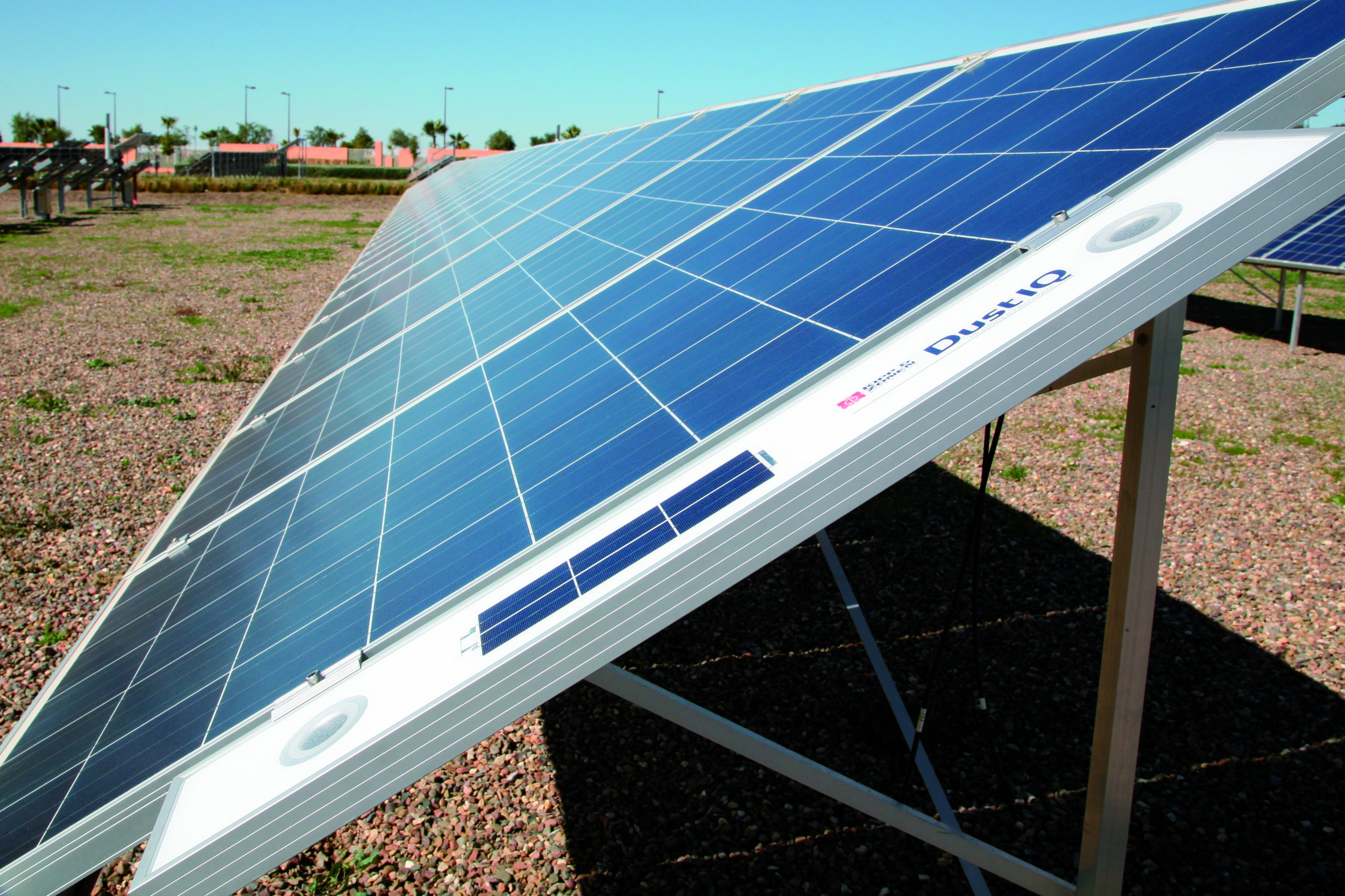Prior to a webinar on O&M efficiency with SolarCleano, a Luxembourg-based company specializing in solar panel-cleaning robotics, we sat down with Udo Kronmueller, our Applications Development Manager for Solar. Udo shared insights into the impact of soiling on PV sites and O&M efficiency. Our Q&A with Udo explores how effective soiling measurement can support the success of your PV plant.
About Soiling on Solar Plants
OTT HydroMet: For those unfamiliar with the concept of soiling in relation to PV sites, can you briefly explain what soiling is?
Udo: Of course. In essence, soiling on PV sites, refers to the various particles that land and buildup on your PV panels. Whether dust, sand, or pollen (to name a few) this buildup is referred to as soiling. Soiling needs to be measured and monitored.
OTT HydroMet: The buildup of particles on PV panels seems inevitable, so why should PV site operators pay close attention to soiling levels?
Udo: When soiling layers and other dirt particles accumulate on the surface of solar panels, they scatter solar irradiance before it reaches the cells underneath. If left unchecked, this buildup ultimately leads to performance loss. Performance lost will begin at the module level and eventually across the entire PV site.
In fact, along with solar irradiance and module temperature, soiling measurement is one of the most critical parameters for accurately evaluating your site’s performance ratio.
What is Measured and Why it Matters
OTT HydroMet: So, what should we be measuring in regards to soiling and why do these measurement values matter?
Udo: The impact soiling is having across your site and overall energy yield is usually described (measured) in two ways:
- Soiling Ratio (SR): The ratio of the actual power output of a soiled PV array to the expected power output if the array was clean.
- Transmission Loss (TL) or Soiling Level (SL): This is the fractional power loss due to soiling using the calculation of 1-SR. The result of this calculation reflects how much power is lost due to the soiling effect on the array.
Overall, these measurements provide site operators with critical insights into the health and performance of the PV site. They help determine whether performance deviations are due to environmental factors, such as soiling.
These measurements also guide site operators in panel maintenance and cleaning. Without them, operators may clean too often, wasting resources and budget, or too infrequently, leading to performance drops.
Soiling Measurements and O&M Efficiency
OTT HydroMet: You mentioned the value of soiling data for site operators. Could you explain in more detail how soiling measurements correlate with O&M efficiency?
Udo: Soiling measurement data offers two key benefits to site operators, ultimately improving O&M across the PV plant:
- It helps determine actual soiling losses, leading to a more accurate assessment of overall plant performance.
- It enables forecasting of the break-even point. This allows operators to identify the optimal time for panel cleaning by weighing cleaning costs against the expected increase in yield.
OTT HydroMet: In addition to providing critical soiling measurements, how does our solution, the Kipp & Zonen DustIQ, enhance O&M efficiency?
Udo: While many soiling solutions are available, the Kipp & Zonen DustIQ stands. The DustIQ utilizes Optical Soiling Measurement (OSM) technology, enabling non-intrusive, continuous, real-time monitoring and measurement of soiling.
What makes the DustIQ unique is that it requires no routine cleaning or mechanical maintenance. It can be easily mounted between framed PV modules on both fixed and tracked sites. You clean the DustIQ when the modules themselves are cleaned.
As business models increasingly shift toward PPAs (Power Purchase Agreements) and guaranteed Performance Ratios, solar O&M teams will rely more on the accuracy and performance quality of their environmental measurement and monitoring instruments. This is why the DustIQ is trusted worldwide.
Final Thoughts
OTT HydroMet: Given that soiling is just one of many environmental factors PV sites must measure and monitor, what future trends or advancements do you foresee in PV measurement and monitoring?
Udo: We are seeing an increasing demand from customers for complete environmental monitoring solutions. The ability to source and integrate the necessary instrumentation to measure and monitor all environmental parameters from a single vendor is becoming more valuable. At OTT HydroMet, with our in-house brands, Kipp & Zonen and Lufft, we are well-positioned to offer a wide range of accurate and reliable measurement and monitoring solutions. From soiling and irradiance to weather, our portfolio covers all the essential parameters for a PV site.
OTT HydroMet: Where can we learn more about soiling and best practices for optimizing O&M on PV sites?
Udo: To explore best practices for soiling management and optimizing O&M on photovoltaic (PV) sites, consider accessing the webinar with SolarCleano. The event featured insights from industry leaders like Engie, EDF Renewables, and Chemitek Solar, focusing on innovations in panel maintenance and soiling mitigation strategies. If you’re interested in accessing the webinar or need further guidance, contact our team.
You can also access “How to Process and Interpret Soiling Data,” OTT HydroMet’s latest on-demand webinar. Led by Sajad Badalkhani, our Europe Service Manager, this session explores the phenomenon of soiling and dives into the measurement principles of the DustIQ soiling monitoring system.
Interested in learning more about professional environmental monitoring for solar PV plants? Reach out to our team of technology and industry experts and find out how you can get more out of your PV panels.




